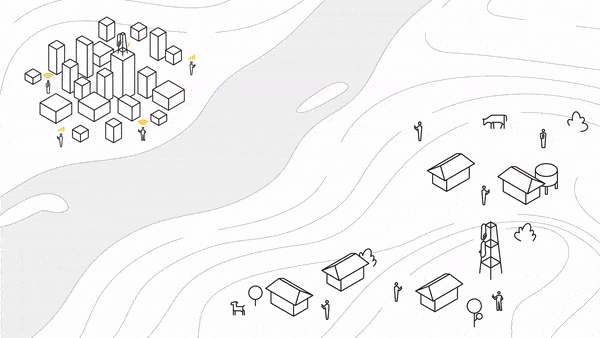
Developers at Alphabet have built an experimental light-based wireless network in Kenya. This is not optical fiber, the basis of the system is a beam of light, which is focused on a remote receiving point - a receiving station.
The project was named Project Taara, within its framework, the company was able to achieve data transmission over a distance of about 20 km without deploying a wired infrastructure. The tests showed a good result, and if the field tests go well, the project will be expanded to other countries of the African continent.
Alphabet collaborates with Econet, Liquid Telecom and Econet Group on the project. Together, these organizations are going to provide high-speed communication for residents of remote regions. True, there is one condition here: the regions must be within the line of sight of the base station. It is logical - after all, we are not talking about radio waves, but about light radiation.
The principle of the network is simple and straightforward - explains his gif below.

As far as you can understand, this is not a laser, although the description of the project says that the connection is made using a narrowly directed beam of light from the base station in the city to the receiving station in the village. As for the bandwidth of such a backbone, we are talking about 20Gbps +. This is enough for thousands of people to simultaneously connect to the network and watch YouTube.
Within the framework of the project, not one link is being laid, but a whole chain of light base stations located in settlements without normal communication. These are not cell towers, their design is much simpler. You can place them on towers, elevated places, roofs. This method of transferring information saves on the laying of expensive network infrastructure. The technology is called Free Space Optical Communications (FSOC).

At the receiving station, the light signal is converted into a wireless radio signal, to which all residents of the settlement can connect. The technology can be combined with the traditional infrastructure of mobile communications, so that residents of remote settlements have an Internet connection added to the cellular one.
The project is being implemented by the Alphabet subsidiary, which was previously called Google X. Another interesting point: Project Taara "grew" from Project Loon, a development that allows you to provide remote regions with communications using base stations located on stratospheric balloons. At first, the project worked (and continues to work) with radio frequencies, but then the participants drew attention to the advantages of focused light beams as a means of transmitting information. In many regions of Africa, the atmosphere is clean, so there should be no problems with data transfer.
